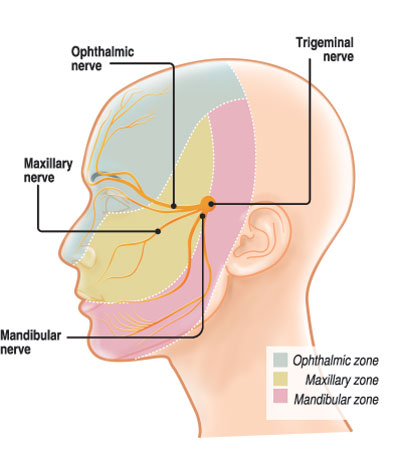A dormant virus that returns as Shingles

Dr. S.D. Jayaratne
Chickenpox – everyone has heard of it or got it, but many are perplexed over what another type of blisters is all about.
Shingles or Ansha papola in Sinhala.
It is to dispel the confusion and make the picture clear that MediScene met senior Consultant Physician Dr. S.D. Jayaratne.
“Shingles is caused by the chickenpox virus in people who have got chickenpox earlier. Many years after a person has got chickenpox, the virus can remain dormant (inactive) in nerve cells and later on become active again,” he says, explaining that chickenpox is an infectious disease which commonly causes mild fever and a rash of itchy, inflamed pimples which turn to blisters and then loose scabs.
Chickenpox is caused by the Varicella Zoster virus. This is the virus which remains dormant and later becomes active to cause shingles or Herpes Zoster, MediScene learns.
Dr. Jayaratne explains how a person who has contracted chickenpox even as a child could be vulnerable to shingles, depending on his/her immune status. This could occur when the person ages, is a diabetic, has had an infection, is under severe stress or is on medications such as steroids, immuno-suppressants or cancer drugs.
 “It is then that the dormant or sleeping virus can get re-activated and travel from the nerve cells along nerve fibres and get into skin cells and cause trouble therein,” he says.
“It is then that the dormant or sleeping virus can get re-activated and travel from the nerve cells along nerve fibres and get into skin cells and cause trouble therein,” he says.
Nerves are whitish fibres that transmit impulses of sensation back and forth between the brain/spinal cord and muscles/organs.
Dr. Jayaratne is very specific: Shingles will form on the skin, along a ‘single nerve’ that is linked to that part of the skin. The network of nerves is always on one side of the body and there is no nerve-link across the midline of the body. As there are no nerves which join across the midline of the body, shingles will always manifest only on one side of the body.
However, shingles can affect any nerve, commonly the face and the body and less so on the limbs, MediScene learns, with the trunk, the abdomen and buttocks being the likely areas.
“The beginnings of shingles would be obvious to the sufferer because there will be a burning and tingling sensation of the affected skin area and sometimes pain, about 48 hours before the rash appears. Thereafter, red patches will form externally on the skin supplied by that nerve. The red patches, over several days, will gradually turn into blisters filled with fluid, similar to chickenpox blisters and about a week later shrivel and dry up, form a black crust and drop off. The whole process will take about two weeks,” he says.

The affected area will burn and tingle about 48 hours before the rash appears
There will be a small pigmented area on the skin where the blisters have occurred which will disappear after a while unless the patient scratches the area and gets a secondary infection which may then leave a scar, cautions Dr. Jayaratne.
The commonest areas affected by shingles are:
- Face – with the involvement of the ophthalmic nerve (linked to the eye), the maxillary nerve (linked to the nose and upper lip) or the mandibular nerve (linked to the lower lip and jaw).
- Ear — the nerve coming into the ear too can get affected, causing paralysis on that side of the face. Sometimes, the blisters may not be visible as they may have formed inside the ear.
“Patients need to be conscious of the dangers when shingles come with the involvement of the ophthalmic nerve, as there could be an impact on the eye itself. The eye will turn red and there will be a discharge from it. If neglected, it could cause damage to the cornea leading to the vision being affected,” he says.
One of the most problematic fallouts of shingles in the elderly is that even long after the disease has run its course, they may be prone to severe pain – post-herpetic neuralgia is intractable, persistent and can go on for months and years after the skin lesions have healed, it is understood.
Dr Jayaratne says that very rarely, complications such as nerves going to major organs can get affected. If it is the bladder, there could be retention of urine; if it is the intestine there could be constipation and bloating of the stomach; and if it is the brain and meninges (the protective layer covering the brain) there could be meningitis or encephalitis. However, these are very rare.
| How it spreads and treatment Shingles is not as infectious as chickenpox as it spreads by close contact, touching etc, rather than being airborne like chickenpox, says Dr. S.D. Jayaratne. Referring to vulnerable groups, he says that expectant women and people who have chronic diseases should be careful, as shingles can spread to any part of their bodies. Discussing treatment, Dr. Jayaratne advises people who get shingles to avoid the application of antibiotic creams as this is a viral infection and not a disease caused by a bacterium. “The best is to apply a non-medical soothing cream such as a calamine or capsaicin which has been made using the active ingredient in chillie that makes them hot. Even though there may be an initial burning sensation, it helps to relieve the symptoms. Another option is a local anaesthetic gel,” he says, adding that having a bath is fine, as long as the skin is pat-dried gently and thoroughly without causing scratches in the skin area affected by shingles. If the pain is severe doctors prescribe nerve analgesics like gabapentin to give relief to the patient,” he says. Doctors also usually prescribe the anti-viral medication, acyclovir, which if given early as soon as the rash manifests itself, reduces the duration of the illness as also the risk of post-herpetic neuralgia, it is learnt. In the west, the chickenpox vaccine is advocated for the elderly, to prevent them from getting shingles, adds Dr. Jayaratne. | |


